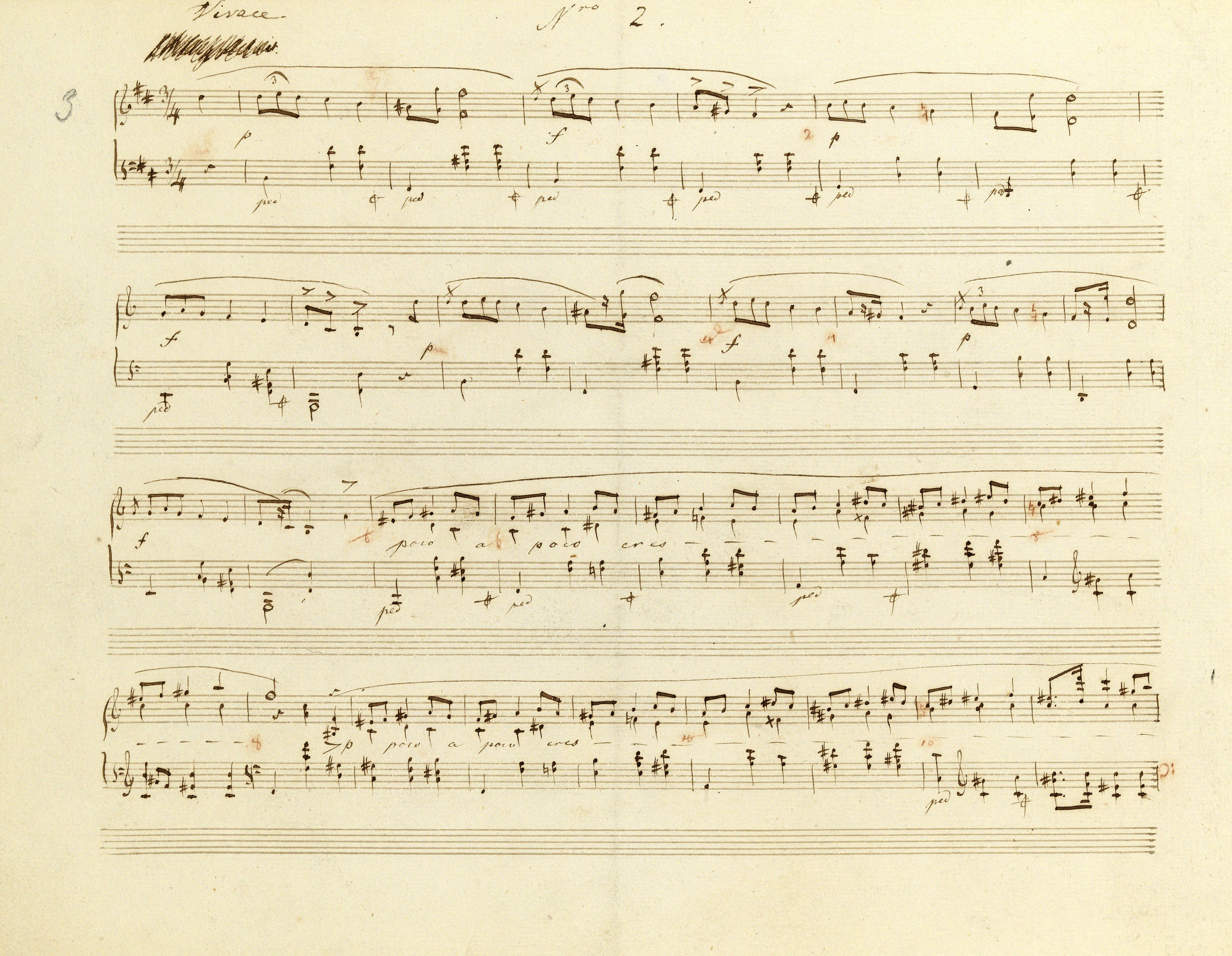Op. 2, Variations in B♭ major
Op. 10, 12 Etudes
Op. 11, Concerto in E minor
Op. 21, Concerto in F minor
Op. 22, Polonaise in E♭ major
Op. 24, 4 Mazurkas
Op. 25, 12 Etudes
Op. 26, 2 Polonaises
Op. 27, 2 Nocturnes
Op. 28, 24 Preludes
Op. 30, 4 Mazurkas
Op. 35, Sonata in B♭ minor
Op. 50, 3 Mazurkas
Op. 63, 3 Mazurkas
Op. 64, 3 Waltzes
(Op. 4), Sonata in C minor




Op. 30 No. 2, Mazurka in B minor
In FE the last R.H. note is a crotchet, as a result of which the bar includes 7 quavers. The mistake was most probably corrected already by Chopin in [A], since initially in FC this note was most probably provided with this value too; however, it was corrected to a quaver (the correction is indicated by the quaver flag having been wrongly written to the left, and not to the right of the stem). It is difficult to say whether it was performed by Chopin – this patent rhythmic mistake could have also been noticed and corrected by Fontana. The place was revised in the same way in EE as well.
There is a possibility that the FC correction does not come from Chopin, which makes us ponder an alternative way of removing the FE mistake – perhaps one should shorten the 3rd note in the bar, b:  . This solution is supported by the notes introducing new phrases in all other situations of this kind – both in the upbeat and in bars 16, 24, 32, 48 and 56 they are always crotchets. On the other hand, the way in which the L.H. part is aligned with the R.H. part in FE clearly points to the rhythm visible in FC and adopted to the main text.
. This solution is supported by the notes introducing new phrases in all other situations of this kind – both in the upbeat and in bars 16, 24, 32, 48 and 56 they are always crotchets. On the other hand, the way in which the L.H. part is aligned with the R.H. part in FE clearly points to the rhythm visible in FC and adopted to the main text.
Compare the passage in the sources »
category imprint: Interpretations within context; Differences between sources
issues: EE revisions, Errors in FE, Rhythmic errors, Authentic corrections of FC
notation: Rhythm

